"I Know What It's Like to Lose Hope:" Anissa's Posture Journey
Anissa Morgan is 46 years old and was born and raised in San Antonio, Texas. In her own words, her relationship with her body has “always been a little messed up.” She didn’t like how she looked. Growing up, her mom frequently told her that she was slouching and "should pull her shoulders back," anecdotal posture advice many of us have heard.
In adulthood, Anissa spent some time in the Army Reserves as a petroleum specialist. The military approach to posture reinforced what she’d heard from her mom in childhood: that she “shouldn’t be slouching and that everything should look ‘a certain way.’” In her job, she would deliver fuel to military vehicles such as airplanes, cars, and trucks. She had to leave this position due to medical hardship after her first husband suffered a severe accident and broke his back, resulting in his paralysis from the waist down. She didn’t have anyone else to take care of both her husband and her young daughter, so she left the military. It was a short career, but she loved a lot about the military experience and the connections she formed with people during her service.
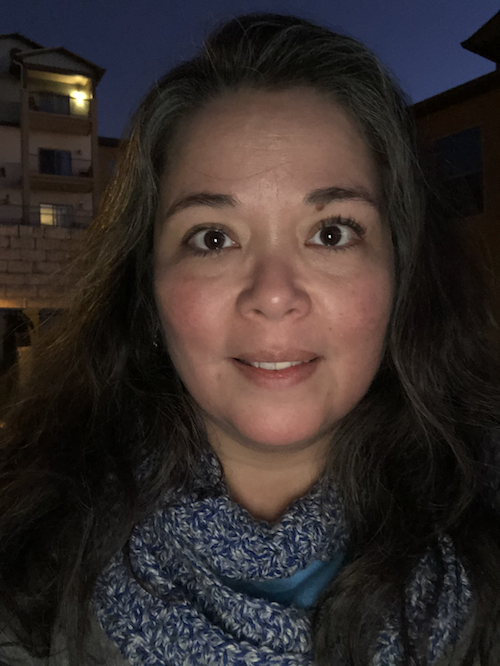
Anissa, 46, has seen her life dramatically changed by the Gokhale Method. Image supplied.
As the primary caregiver of her then-husband, the load on her body was extreme. She would have to carry her husband’s wheelchair, even while pregnant. Not long afterward, she and her husband divorced. Between pregnancy, childbirth, parenting, and the end of her relationship, she endured a lot of emotional and physical trauma.
“I was never an athlete or in super-great shape, but when I was in the military, I’d started having problems with my knees and my feet. My arches started to fall then,” says Anissa. She feels that may have been the first sign that things were going wrong.

Military posture guidelines encouraging tension and artificial positioning in the body predispose servicemembers to posture problems, which can lead to pain and injury. Image courtesy 272447 on Pixabay.
After her time in the Army Reserves, Anissa recovered from her divorce and eventually remarried. She found a job working at the Officer’s Club doing clerical and computer work. Computers were just coming into widespread use at the time. After that, with her valuable skills, she began working at the computer helpdesk at the USAA office in San Antonio. One element of her job with USAA involved travel: visiting field adjusters to set up laptops for them. One day, after a training, carrying a heavy load of equipment and baggage, she bent over and felt something give. After a couple of weeks where her back was “uncomfortable,” she visited her husband’s chiropractor, which was “like magic.” One morning, however, while making lunch for her three daughters, she bent over to pick up a box of Capri Suns and couldn’t stand back up again, and could hardly lift her leg. That’s where “the really major problems” began.
This continued until she was about 32 and her “back was done,” leaving her unable to work due to severe pain.
With her level of pain, sitting at a computer desk all day was excruciating. “Even with the great resources they have there, like standing desks and the people that would come in from Ergonomics who would tell you how you were ‘supposed to sit and stand’ — all of which I now know was wrong — it just wasn’t possible for me anymore, so I stopped working at about 32.”
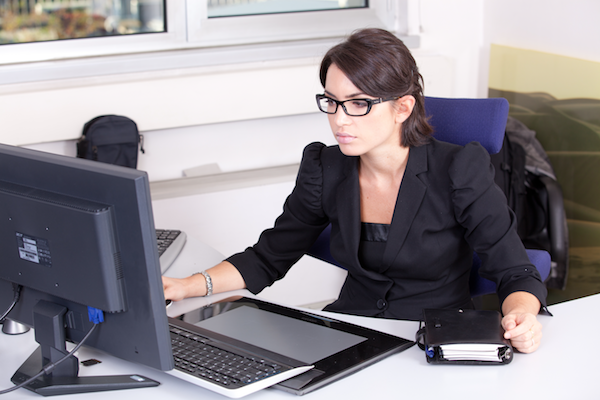
Sufficiently severe pain makes even desk jobs impossible, as it did for Anissa. Image courtesy Claudio Scott on Pixabay.
“It just didn’t work”
It turned out that Anissa had a rupture in the spinal disc between her L4 and L5 vertebrae, which resulted in severe pain in her lower back and radiating down her legs, into her calves, and a loss of feeling in her toes. At the time, all she wanted was to have her back “fixed” so she could be sent back to work. By then, she had 3 small children and a job she loved. She needed to be able to show up in her life. With this in mind, she opted to have laminectomy surgery to hopefully resolve her symptoms.
Although the laminectomy gave her around 6 months of improved symptoms, the surgery soon revealed itself to have been unsuccessful in resolving her pain, which returned and began radiating down her legs again. A second surgery was proposed to fuse her L4 and L5 vertebrae. Her surgeon’s perspective had been tightly focused on the disc as the cause of Anissa’s problems, suggesting that once it was removed and that joint was fused, she would “feel grand.” There was again a little relief soon after the second surgery, but it quickly became apparent that even after this fusion, working at a desk all day wasn’t good for her body and something she could tolerate. The one way Anissa could tolerate it was with the use of opioid pain medication, although this further complicated her ability to do her mentally demanding job — troubleshooting computer problems — well. “You’re problem-solving — that’s your gig,” Anissa says. “And when your brain can’t fire, there’s no solving going on. Unfortunately, that was the end of that.”
Within a year of the first surgery, she was starting to feel pain in her legs in a different location. At the time, she had a wonderful pain management doctor, but Anissa was still concerned about the side effects and addictive potential of opiate painkillers. She began feeling terrible pain on the front of her thigh, which would command all her attention while driving an hour and a half to visit a friend. By the time she got home, she’d have a bruise on her leg where she’d been pressing the muscle, trying to get some relief. Her pain management doctor recommended another MRI, which revealed that the discs above and below her fusion site were herniated — just a year after the fusion surgery.
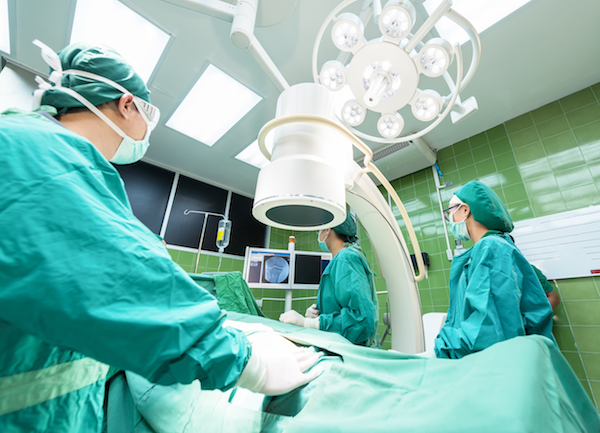
For Anissa, surgery was a “band-aid” treatment which did not eliminate her pain long-term. Image courtesy Sasin Tipchai on Pixabay.
“My decade of darkness”
The worst of Anissa’s severe, debilitating pain lasted a decade during which she didn’t know what else to try. She tried acupuncture, and completed five different courses of physical therapy within a couple of years. She’d given it “everything [she] knew how to do” and was still having to resort to taking enough opioid pain medication to keep herself comfortable while trying to balance the demands of her body with those of being a wife and a mother. “That,” she says, “was my decade of darkness. There was no moment that was comfortable. There was no joy left in my life, because all I could think about was the pain in my spine, which then started radiating up through my thoracic spine and neck. My whole body hurt all the time.”
Anissa was hitting rock bottom. She would wake up at night heaving and sobbing from pain. She didn’t know what else to do or what to try. All her doctors wanted to do was more surgery: fusing two or even three more levels of her spine. Her pain management doctor would give her steroid injections and trigger point therapy, all of which were wonderful, but they weren’t long-term fixes and only took the edge off the pain. She felt like a burden to everyone, and a failure, and didn’t see how she was going to go on living like that.
In a moment of deep desperation, Anissa hid in the closet, kneeled, and prayed for assistance. In her own words, she “saw the light” and was filled with a new determination. She decided to start over, trying every approach again, so that if she did have to resort to another surgery, she would know that she had done everything she possibly could to avoid putting herself in a worse situation. That was her nightmare: that she would do what the surgeons advised and the new surgery would only do what the second surgery had done.

Opioid painkillers were something Anissa was not happy about having to take in such large doses. Image courtesy newsong on Pixabay.
The next day she got online and went in search of acupuncture. She Googled and found an acupuncturist and someone’s testimonial called him a “gift from God,” and hoped that perhaps he could be such a gift for her as well. She walked into the acupuncturist’s office barely able to lift her feet to walk, with numbness in her feet so severe she would avoid the stairs at her house for days at a time for fear of falling. By going to the acupuncture appointment, she felt she was just doing her due diligence and crossing something off the list.
Her first acupuncture treatment was “excruciating.” The acupuncturist is “old-school,” from Taiwan, and she found him somewhat frightening and difficult to understand. After the treatment, he asked her, “How do you feel?” And she replied that she didn’t know, but that she might have been feeling a bit better. She was experiencing a pulsing sensation which was new to her, and which she found encouraging. When he prompted her to lift her legs to waist level by raising his hands as targets for her to reach toward, she was shocked to be able to do so, considering that she had barely been able to walk into the office for her appointment. She got back up from the treatment table “thanking God that maybe this was something” that would continue to help her. She now had hope that something better — perhaps even relief — might be possible.
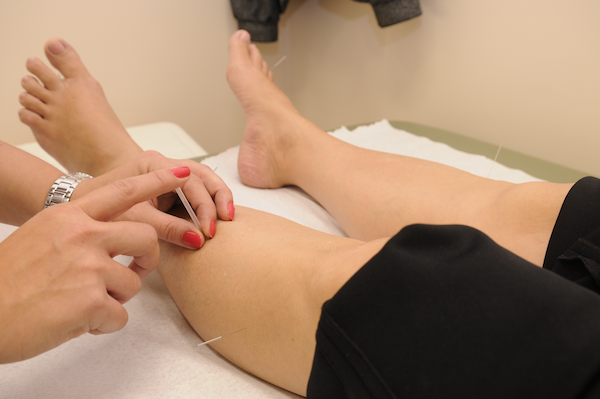
Acupuncture was the first partially effective intervention Anissa found, but it didn’t fix her underlying posture issues. Image courtesy Hamilton Viana Viana on Pixabay.
Over the next three months, she frequented her acupuncturist, seeing him by her choice for treatment two to three times a week. She could feel the healing occurring in her body. The treatments reduced her pain to a tolerable level. Her next target was stopping the narcotic pain medication she’d resorted to for years. Someone in a chat room online told her about kratom, which she investigated and then used for a short time in order to transition away from the prescription painkillers. “I’ve been pharmaceutical-free for going on about four or five years now. But during that time, I still had pain.” At this point, she still had pain to contend with, but “not to the level where everything was darkness.”
“I’ve learned now that if I manage my life right, I can have joy again. I can do things again.”
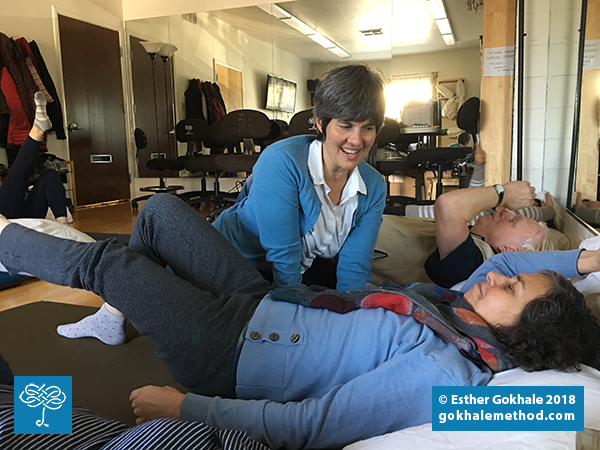
The Gokhale Method is something Anissa first heard about from a friend.
A new approach to pain relief
Anissa first heard of the Gokhale Method from a friend with whom she had a reciprocal coaching arrangement: Anissa would life-coach her friend, and her friend health-coached Anissa. “She said, ‘You know, I heard about this, and it might help you.’” Anissa looked it up, watched a few videos, and bought herself a copy of 8 Steps to a Pain-Free Back as it was more within financial reach than enrolling in a course immediately. “Let me see what I can get from the $20 book first, before I further the investment. From the book, I was able to tell that it was something and that it made sense to me. With what I had been through and what they had tried to teach me and what was so different.”
Anissa “almost didn’t go to the Pop-up Course.” She was aware Esther was travel-teaching in Texas, but the courses weren’t near Anissa. However, they were close enough for her to try to get to. She felt it was a sign: a response to her prayers. “I was actually experiencing higher-than-normal pain, the most I’d had in a few years, and I really wanted to go, but I didn’t know if I could. I didn't know if I was physically capable.” Determined, Anissa ended up driving 5 hours to Dallas — a drive that would be impossible for her most of the time due to her pain levels, but the endpoint of which was so important to her she didn’t want to miss it. She was assisted on the drive by one of her daughters.
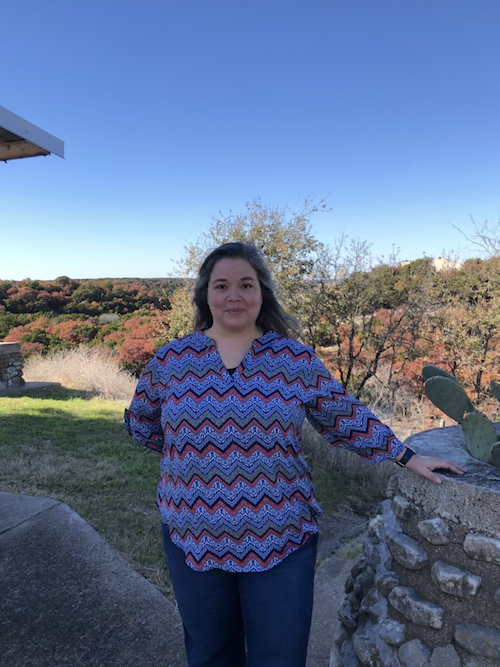
During the drive back to San Antonio back from the Pop-up Course in Dallas, Anissa asked her daughter to take this picture of her standing without pain at a rest area — a truly memorable moment. Image supplied.
Dramatic results in a single day
By the end of the Pop-up Course and the drive home to San Antonio, Anissa almost couldn’t believe the results. “My camel hump on my neck was gone! And I knew it was gone, but I questioned how that had happened.” Just that day, she had noticed her longstanding kyphosis, also known as a “buffalo hump” or “dowager’s hump,” during the halfway point of the course, when she was experiencing some of her usual pain and applied a topical pain relief cream to it. She regularly asked her husband to rub this kyphotic hump to provide her some fleeting relief. But after the Pop-up Course, the hump was gone. This was a big change; nothing she’d ever done before had ever had such dramatic results in such a short amount of time. “The book was great, but I really needed the hands-on [learning], and I need to do the Foundations Course next. My body is used to being a certain way, and it’s taking time to train my brain to do things differently.”
In her own words, Anissa is “thrifty, so [the course tuition] felt like a lot of money.” It was actually her and her husband’s anniversary weekend and she wanted to do something with him for the occasion, but she reconsidered. “I thought, what better gift could I give to my husband than feeling better?”
“Acupuncture has helped me manage my pain to where I can have a life now. It’s a more limited capacity than I would maybe prefer. But what the Gokhale Method did is open the door up wider.” A couple of weeks after the course, Anissa and her husband took a trip to Marble Falls and went hiking for the first time in maybe 15 years. “I remembered how much I loved it, and how good it feels to stand in nature — wow, Lord, really! This is in my backyard? And I never would have seen it, because I was afraid [of debilitating pain].” On her hiking trip, she realized the course was “worth all that money and then some, because we get to do things we used to not be able to do, that we hadn’t done in a really long time. So it was amazing.”

Anissa’s once-debilitating pain is now well-managed enough to let her live her life again, as in this photo during her hiking trip to Marble Falls. Image supplied.
“An answer to prayer”
When she does experience pain, the Gokhale Method has given Anissa the tools to realize that something is in need of adjustment. Anissa is humble and adamant that, in spite of her excellent and heartening results, her posture journey is only beginning. “I only know this much, and it’s made such a huge difference,” she says. “Even knowing that much has made a huge difference. And there’s so much more.” The private online follow-up session with Kathleen was a needed refresher on the techniques. Being able to bring the method home to her space, to her desk, and to her home context was incredibly helpful for Anissa. Aside from the pain relief, Anissa appreciates the comprehensive nature of the Gokhale Method. “It’s for your whole body, working with your whole body the way it was designed to work,” unlike exercises focused only on giving people superficial benefits, like “great abs.”
When asked what Anissa treasures being able to do with her body, it’s the simple things that are most important. She has a young grandson, and being able to pick him up and get on the floor and play with him are precious. The freedom of being able to get in the car and drive for 10 hours and end up in New Mexico, for example, is a blessing. “I want a body that doesn’t limit my capacity to do what I do and what’s important, not to be sitting there with family and friends and wondering when I can go home because my back hurts so much. I want to be able to actually enjoy conversation and interaction with people without the primary brain focus being the pain in my body.”
Anissa considers her whole journey to have been “an answer to prayer. It was too weird the way it all happened, and the results. I always know it’s special — a gift — when it goes this well. Not that the process has been easy, because I feel like I’m constantly having to work on it and I have so much more to learn. But to get such an immediate injection of hope, to feel that maybe I wouldn’t at some point be managing the symptoms of my pain with acupuncture and supplements. I have hope that this can build up to more as I go further in the process and learn to work with my body the way it was designed to be.”
And given her history, she’s no stranger to despair. “I know what it’s like to lose hope. I know how different your life can turn out if you can’t be pointed and guided in a direction that’s not pharmaceuticals, that’s not injections, that’s not surgeries. I’ve met so many people whose long-term results are a disaster. Maybe in the beginning they’re ok, the first few years out, but talk to them 5 years after surgery and they’re all miserable, too. I’d like to be able to help share this and help save people from the decade of disaster I experienced myself.” Thankfully, with the Gokhale Method on her side, Anissa has a brighter future to look forward to.
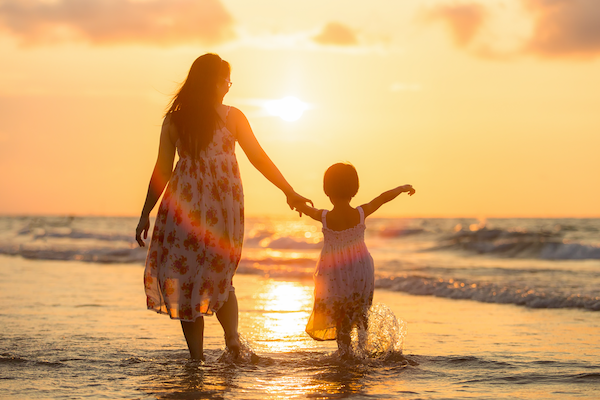
Future generations, and our ability to show up for them, can prove excellent motivation for reducing our pain and improving our functionality. Image courtesy Sasin Tipchai on Pixabay.

Comments
Thanks for your amazing story
Thanks for your amazing story. I so much hope you can continue to have reduced pain :)
I have also had chronic back pain but not as long as you have had it. And mine is slowly improving - as you said in your story it's an amazing experience to get some glimmer of hope after years of life-ruining chronic back pain. I had also tried innumerable doctors, therapists, massage, acupuncture - on and on with absolutely no effect and lots of $ spent. But the worst thing was what you mentioned - hope that a new therapist would somehow find a way to stop the pain inevitably but they never did. It's late here now but I'll write more tomorrow. I so much empathize with your story :)
OMG you're amazing and this
OMG you're amazing and this talk you gave was so inspiring!! I have felt hopeless too. Had probably 10 PT, after physician and Neurosurgeon consultation, 5 or 6 massage therapists. 2 different Accup. Therapists, tried dry needling. 1 spinal injection that did not help at all. Tried CBC oil and the only thing that has helped was reading and practice 8 Steps to a Pain- Free Back, taking the Foundations Course and then this spring I re-enrolled in the Gokhale Univerisity and took the Elements Course. Working very hard on all daily classes and esp glide walking. I am thinking of doing a refresher course soon. Health is just about everything.
Add New Comment
Login to add commment
Login